LG pOLED: introduction and market status
OLED is an emerging display and lighting technology that enables beautiful and efficient displays and lighting panels. Thin OLEDs are already being used in many mobile devices and TVs.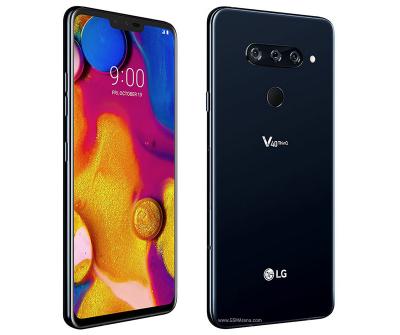
LG Display - pOLED displays
LG Display is one of the leaders in OLED production. LG Display started producing flexible OLEDs for mobile devices in 2015, initially focusing on small wearable OLEDs - for devices such as Apple's Watch and LG's own wearables.
In 2017, following a large expansion in LGD's AMOLED production capacity, LG Display started to produce large flexible OLEDs for smartphones. This is when LGD also started to brand its OLED displays as pOLEDs (p is for plastic). LGD now provides its pOLED displays for several smartphone vendors, including Apple, and Motorola.
LGD pOLED production fabs
LG Display has several flexible OLED production fabs. The first one was a pilot 4.5-Gen line, with limited capacity - and so the E2 line is used to produce LGD's flexible wearable OLED displays. LG Display's second pOLED fab is is its E5 line in Gumi, which has a monthly capacity of 7,500 monthly 6-Gen substrates . LG Display's third line is the E6 line in Paju which is another 6-Gen line, but with a larger capacity of 15,000 monthly substrates.
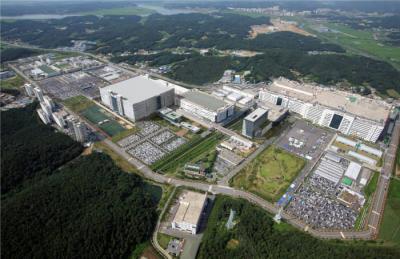
pOLED vs PLED
pOLED is LG Display's brand name for mobile flexible AMOLED displays. Somewhat confusingly, PLED, also called P-OLEDs, are Polymer-based OLED materials - a class of materials pioneered by CDT (now owned by Sumitomo) that can be used to create OLEDs (most OLEDs today use Small Molecule OLED materials). For more on PLEDs, see here. These two different brands and technologies are quite unrelated...
Further reading
SOAR says it shipped over 200 million OLED displays, since it began production in 1997
SOAR Corporation announced that it has shipped 200 million PMOLED displays. SOAR produces a range of PMOLED displays, focusing on wearables, audio systems, communication equipment, home appliances and automotive applications. The company also offers custom transparent and flexible displays.
SOAR was spun-off from Pioneer Corporation in 2022 and handle's Pioneer's PMOLED production business. Pioneer was the first company produce OLED displays, back in 1997. It is also the first company to use PHOLED materials (back in 2004).
LG Display aims to expand the use of deuterated OLED compounds
In 2021, LG Display started to adopt deuterated OLED compounds in its WOLED panels, to improve the lifetime, efficiency and brightness. Today, all of LG's WOLED TV panels use deuterated blue OLED emitters, in which hydrogen is replaced by its more stable isotope, deuterium. The higher stability enables longer lifetime, which in turn enables higher brightness and efficiency.
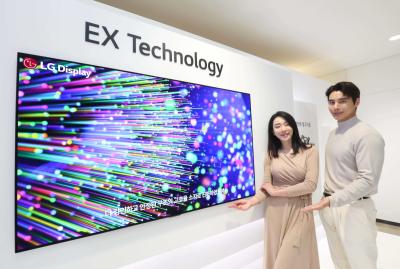
It is now reported in Korea that LG Display now aims to expand the adoption of deuterated OLED compounds to its red and green and yellow emitters, and also other layers in the OLED stack. If this report is true, it means that LGD will also use the technology in its mobile (p-OLED) panels, not just its OLED TV ones.
Motorola unveils a new bendable phone concept based on an LGD pOLED display
Motorola has demonstrated a new concept phone design, which they refer to as a Adaptive Display Concept. This is a smart bendable phone, that sports a 6.9" FHD+ (2220x1080) flexible AMOLED display produced by LG Display.
The adaptive display concept can be adjusted from a standard Android phone experience in a flat position to being wrapped for a wrist-worn experience or positioned in several stand modes.
LG Display strenghten its premium automotive display partnership with Mercedes-Benz
LG Display announced that it is strengthening its partnership and collaboration with Mercedes-Benz. The two companies started working together in 2004, and since then the German carmaker has been applying cutting-edge automotive displays from LGD to its luxury vehicles.
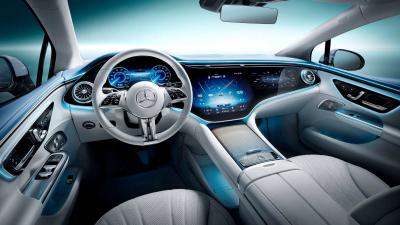
Mercedes has been applying LGD's OLEDs for several years, and so it is not clear what will now change, but it is likely that we'll see more Mercedes models adopting high-end displays from LGD, mostly OLEDs. The Mercedes EQE 2022, for example, uses either a 12.8-inch AMOLED or (optionally) Mercedes' MBUX Hyperscreen, a 56-inch display, actually made from three different OLED units, embedded in a single glass display. There's a central 17.7-inch panel plus two 12.3-inch panels. The 56-inch glass also includes holes for the air-vents which are integrated into the display.
LG Display raises $1 billion in debt to invest in its OLED module factory in Vietnam
LG Display announced that it has raised $1 billion in long-term loans from international banks, that will be invested in expanding its OLED module production line in Vietnam.
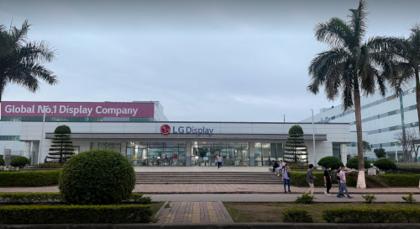
In September 2021 LGD announced it is set to expand its Hai Phong fab capacity to 13-14 million monthly units, in a $1.4 billion investment. It's not clear whether the new funds are an addition to that, or is this the funding for the 2021 announcement.
LG Display confirms it is supplying flexible OLED displays to Mercedes' electric cars
The 2022 Mercedes EQE electric car comes with either a 12.8-inch AMOLED or (optionally) Mercedes' MBUX Hyperscreen. The Hyperscreen is a 56-inch display, actually made from three different OLED units, embedded in a single glass display. There's a central 17.7-inch panel plus two 12.3-inch panels. The 56-inch glass also includes holes for the air-vents which are integrated into the display.

The MBUX Hyperscreen was first used in the higher-end EQS electric car. The 'lower-end' 12.8-inch AMOLED screen, shown below, is used in the 2021 S-class cars. We speculated that LG Display is supplier to Mercedes (the two companies have been working together since around 2016) and LG Display earlier this week officially confirmed that it is indeed Mercedes' OLED supplier.
LGD reports a profitable quarter, on track to ship 8 million OLED TV panels in 2021
LG Display reported its financial results for Q3 2021. Revenues increased 7% from Q3 2020 to reach 7,223 billion KRW ($6.2 billion USD) while net income was 463 billion KRW ($396 million USD).
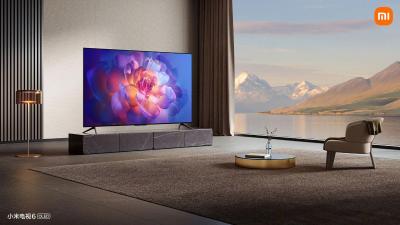
LGD says that it enjoyed high demand for IT panels, and its large-size OLED business continues to "strengthen its position in the market as the premium TV sector continues to grow". LGD expects to ship 8 million OLED TV panels in 2021, with record annual profit.
Cadillac to adopt a 33-inch pOLED display in its upcoming 2023 Lyriq EV
Cadillac announced that the upcoming 2023 Lyriq EV will sport a wide 33-inch "advanced LED" display, and according to reports online this will actually be an OLED display.
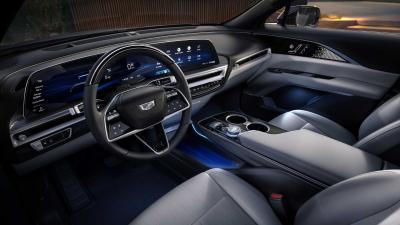
This makes sense, as Cadillac is already using OLEDs in its premium cars. The 2021 Escalade has a 38-inch LGD P-OLED display, that comes standard in all Escalade versions.
LGD to increase pOLED production capacity in a $2.8 billion investment
A few weeks ago LG Display noted that it is reviewing a plan to expand the capacity of its mobile OLED production plants, and today LGD announced its formal plan to invest 3.3 trillion Won (around $2.8 billion) to expand pOLED capacity.
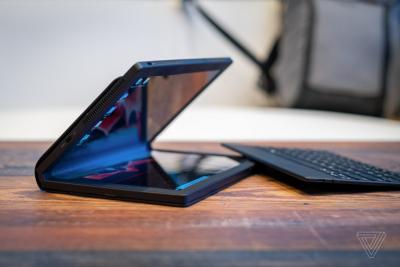
LGD will expand its 6-Gen AMOLED production capacity, and this expansion project will finish by March 2024. LGD did not provide any more details about this plan. LGD is enjoying high demand for its mobile AMOLED displays, with Apple one of its major customers.
Merck starts to produce HTM materials at its Korea production site
Towards the end of 2020, Merck announced that it is expanding its OLED material production site in Korea. The company today announced that HTM production commenced at the site.
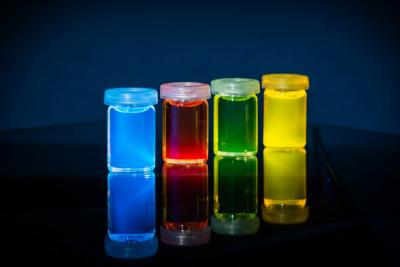
Merck is already supplying HTM (Hole Transport Materials) to LGD, to be used in large OLED TV production. Merck is now starting to supply HTM materials for LGD's mobile p-OLED displays as well.
Pagination
- Page 1
- Next page




